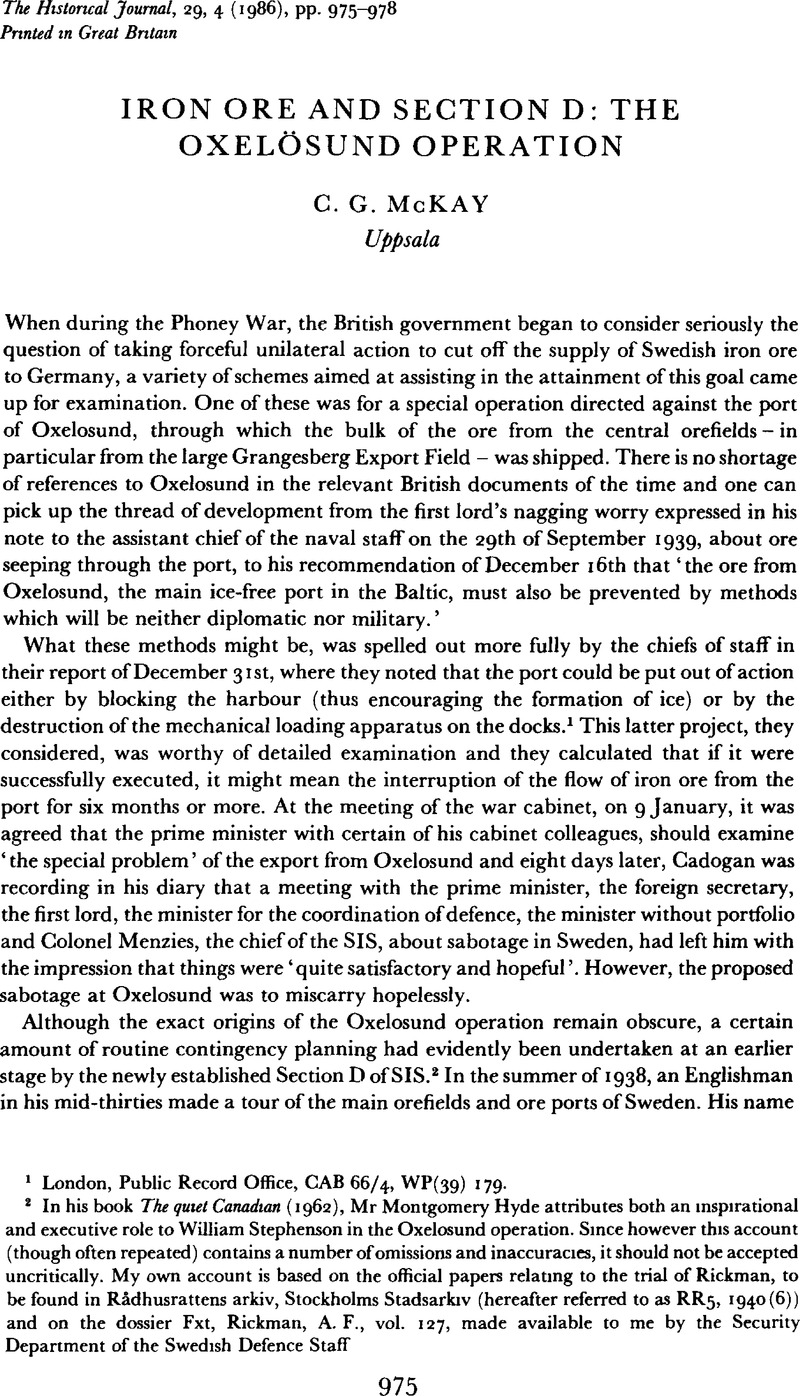No CrossRef data available.
Published online by Cambridge University Press: 11 February 2009

1 London, Public Record Office, CAB 66/4, WP(39) 179.
2 In his book The quiet Canadian (1962), Mr Montgomery Hyde attributes both an inspirational and executive role to William Stephenson in the Oxelosund operation. Since however this account (though often repeated) contains a number of omissions and inaccuracies, it should not be accepted uncritically. My own account is based on the official papers relating to the trial of Rickman, to be found in Radhusrattens arkiv, Stockholms Stadsarkiv (hereafter referred to as RR5, 1940(6)) and on the dossier Fxt, Rickman, A. F., vol. 127, made available to me by the Security Department of the Swedish Defence Staff.
3 In Faber's ledger, the book was entered as ‘Swedish Iron Ore, author L. D. Grand, date received 21st March 1939’. Letter from Mr Matthew Evans to the present author, 28/11/83. It is also clear that Sir Geoffrey Faber was aware that some devious scheme was afoot.
4 See the Swedish Government Paper SOU 1948:7, p. 180. (Example 1 from Gamstedt's report).
5 SOU 1946:93, p. 74.
6 See RR5, 1940(6), Bilaga 5/238 where in a letter dated 5th April 1940, Rickman noted that It should also be pointed out that many of our visits have turned out unsuccessful due to YM's [Sutton-Pratt] unexpected absence for one reason or another' According to Arno Behnsch (the Oxelosund newspaper Folket, 29 December 1984) the operation at Oxelosund was part of a triple operation intended to take place simultaneously at Narvik, Luleå and Oxelosund Because this was difficult to synchronize and because there were constant changes in instructions, the saboteurs in the team became nervous It remains to be seen if Behnsch's story of a triple operation is borne out by surviving Section D papers, when these become available in the PRO.